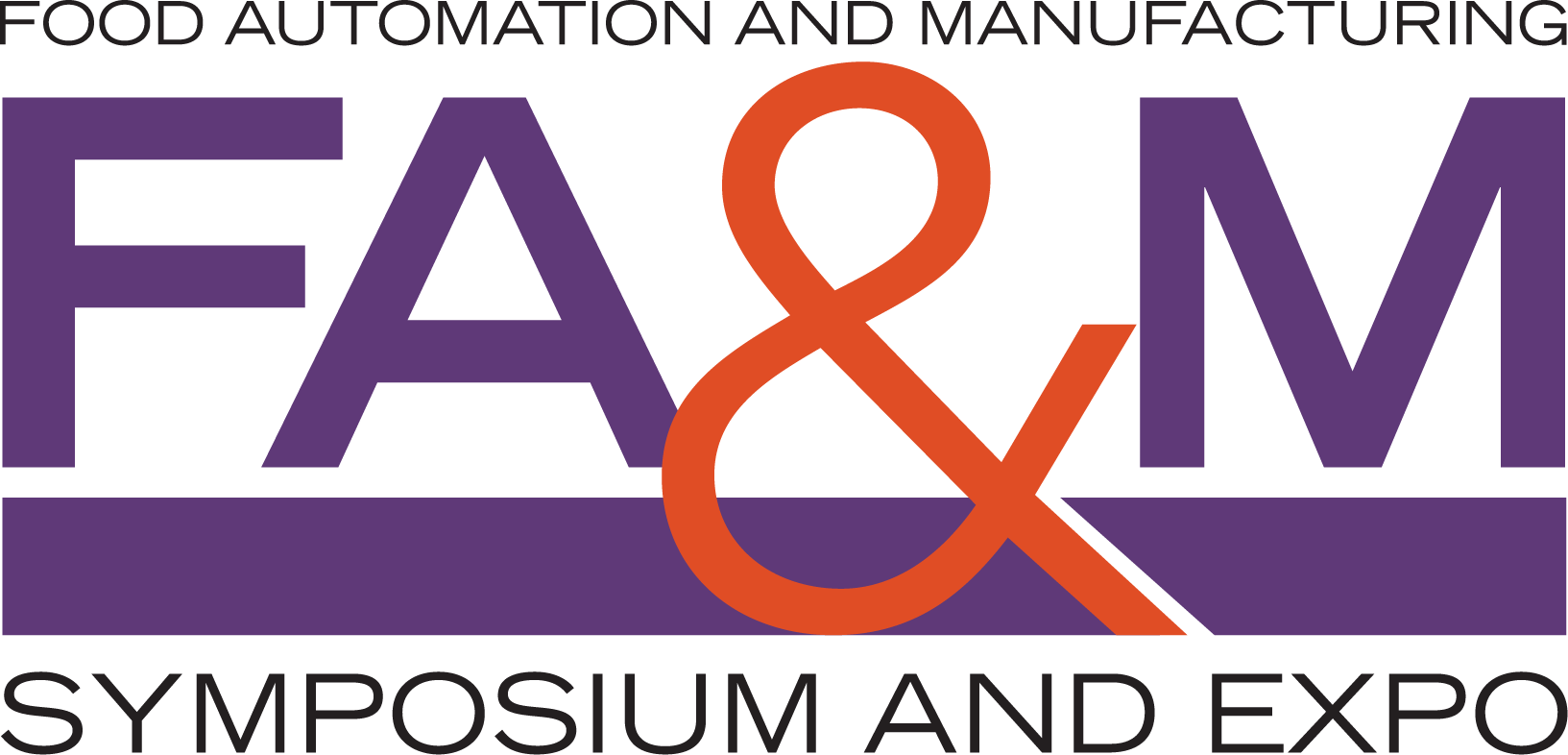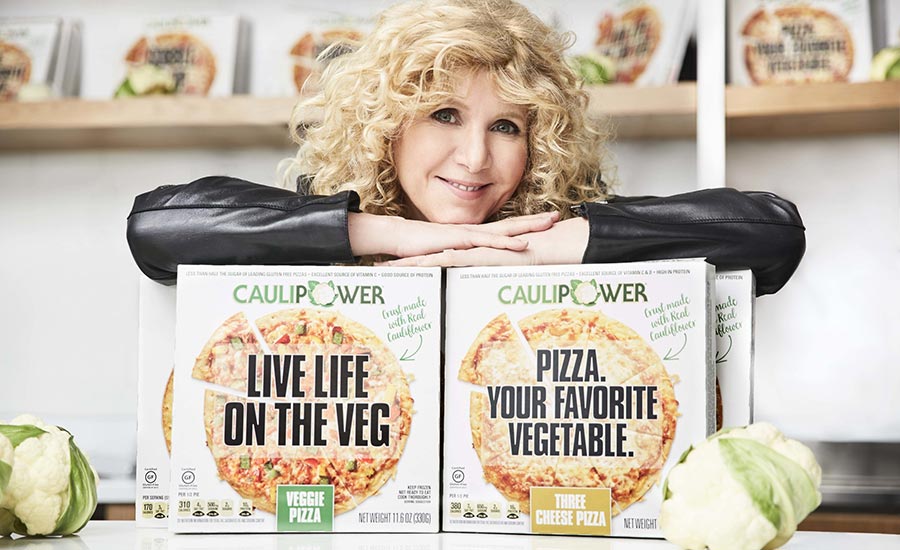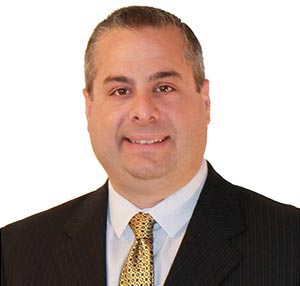FA&M Recap
The 2020 Food Automation & Manufacturing Conference
Virtual conference provides food and beverage processors with insights from industry experts

Even though the 2020 Food Automation & Manufacturing Conference was a virtual event, it still brought together industry experts to learn from each other about how to improve their operations. Save the date for 2021 conference in Miami scheduled for Sept. 12-15.
Photo courtesy of Wayne Labs
The 2020 Food Automation & Manufacturing Conference was unlike any other in the conference’s 21-year history.
Originally scheduled for April, the event was initially postponed to September because of the COVID-19 pandemic. With in-person gatherings still not possible at that point, the conference shifted to a virtual platform for the first time.
Although it was a different format, one thing stayed the same: A number of industry experts provided attendees with valuable insights on topics ranging from successful project management to the engineering challenges of alternative meat, and almost everything in between.
Read on for Food Engineering’s recap of the 2020 Food Automation & Manufacturing Conference. To view sessions in their entirety, visit https://www.foodengineeringmag.com/food-automation-conference.
FA&M Highlights:
- Engineering Keynote: Engineering 101: Managing the Managers
- Automation Keynote: Creating a Sustainable Performance System
- Women in Food Manufacturing Keynote
- The Fundamentals of Hygienic Design
- Analytics Excellence Across Multiple Plants
- Bringing Together OT and IT
- Plant of the Year
- Sustainable Plant of the Year
- Women in Food Manufacturing panel
- The Engineering Challenges of Plant-Based Meat Plant
- Dynamics Unique to Emerging CPG Brands
- What Blockchain Can’t Do
- Solutions Theater presentations
Engineering Keynote
Engineering 101: Managing the Managers
Joe Zembas, Senior Manager, Reliability Engineering, The J.M. Smucker Co.
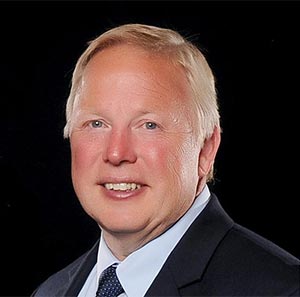
When planning and managing projects, engineers have to understand the importance of building a support infrastructure, says Joe Zembas, Senior Manager, Reliability Engineering, The J.M. Smucker Co.
It starts with clearly identifying the relevant stakeholders and getting their initial buy-in, but it has to go beyond that. As projects progress and potentially change, keeping everyone on the same page helps head off unexpected challenges if the crop up during the project process.
Zembas identifies four core stakeholders in any project: the sponsor, who procured support; the customer, who is materially affected by the project; the project execution team, which is going to be making the detailed decisions that make the project happen; and the project manager, who is responsible for meeting the sponsor’s charge.
Zembas also identifies the key elements of documentation. They are: business need; objective; success criteria, measures and timing; approach/strategy; priorities; scope; resources (sponsors, customers, project team); funding; and signatures.
Putting all of those pieces into place is the beginning of a successful project, not the end. As the project runs its course, stakeholders need to be given regular updates on how the project is progressing and any potential trouble spots. Any potential changes need to be identified as early as possible and brought to the attention of stakeholders.
Zembas shared a story about having lunch with someone from an engineering firm when he was transferring from one site to another. Zembas was surprised to hear that the engineering firm would miss working with him, because he had often butted heads with them over the specifics of projects. But the engineering firm member told Zembas that while they often disagreed on the “pieces and parts,” Zembas’s clarity in describing exactly what he needed from a project was a refreshing change from customers who couldn’t articulate what their goals were for a project.
“I have long since joked that that was the most valuable lunch I have ever had,” says Zembas.
Automation Keynote
Creating a Sustainable Performance System
Dan Stauft, Director, Operational Technology, SugarCreek
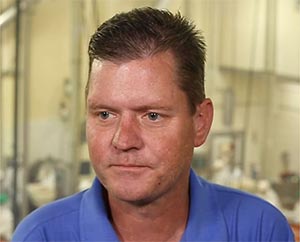
SugarCreek began its digital journey by creating its corporate “SugarCreek Performance System,” based on Inductive Automation’s Ignition software, in 2015. This was just a year before FE featured SugarCreek’s new Cambridge City, Ind., plant as “Food Plant of the Year” in April 2016.
In an effort to move from a bill-of-materials (BOMs)-based company to a manufacturer operating on continuous improvement (CI) principles, the processor’s privately held management looked to the auto industry, which had already made the move, and hired Dan Stauft, who previously worked for Nissan, Toyota and GM. Stauft had 23 years of experience in industrial automation and networks. Also hired was Craig Langhals, a CI veteran with large food companies like ConAgra and Hormel.
Together, they developed SugarCreek’s new system and set the company on the path toward continuous improvement. Stauft likes to say that “SugarCreek is one of the biggest food manufacturers you never hear of.” The processor had more than $750 million in revenue in 2019 and 37% growth in the last five years, expecting to hit $1 billion in the next few years. While the recent COVID-19 pandemic may have slowed business slightly, more important, SugarCreek’s enterprise-wide, software platform allowed the company to pivot easily from food service to retail—and now it’s also accommodating food service as people start eating out again.
The SugarCreek Performance System connects plant floor devices together, which used to be islands of automation, and supplies performance data to the IT system. The platform also receives data back from IT to help operations turn its equipment into fine-tuned and peaked-for-performance systems where operators have all the information they need to keep their machines running together smoothly. While OEE is a major part of KPIs, there is, however, more to measuring performance. Understanding that losses occur due to reasons other than maintenance downtime is an eye-opening experience to improving efficiency.
Caulipower, a $100 million+ brand, was born of one mom’s frustration from waiting for food manufacturers to create healthier, tastier products for her two sons who have to avoid gluten.
That woman, Gail Becker, founder and CEO of the company whose cauliflower-crust pizzas are a top seller in the frozen section, says she often thinks about why Caulipower was needed at all when huge food companies spend so much money on product innovation.
“Why was there a hole that someone like me who knew nothing about the industry could fill?” she asked in her women in manufacturing keynote. “How could this be sitting in plain sight?”
Being a woman has a lot to do with the answers to those questions, she says.
Food companies must involve women more in product development because they are good at seeing emerging trends, and their insights early in development can make or break a product, she says. “We know what consumers want; we’re really close to what consumers want,” Becker says.
In her case, she made a cauliflower pizza crust once from scratch and decided never to make one again because it took an hour and half after her workday. She stayed on top of what was happening online with the gluten-free food category as she searched for recipes, saw the cooking failures people posted, learned about people selling homemade pizza crusts at farmers’ markets, and researched ways to try to get her kids more nutrients. That window into the market helped her feel the strength of the growing interest in eating gluten-free.
Now the company keeps expanding its cauliflower-based products, adding riced cauliflower during the pandemic as a new category alongside its tortillas, chicken tenders and roasted sweet potato slices that offer a toasted bread replacement.
But when she sought startup money and got the business going, many potential investors, overwhelmingly men, and even co-manufacturers didn’t want to take a chance on her idea or on a woman-owned business. “They thought I was crazy and thought this would never succeed.”
Today, she says she is the last person who would have thought that she would give a talk about women in manufacturing. But an entrepreneurial spark she internalized from her dad who ran a small business drove her to start the business and keeps driving her to build on Caulipower’s success. “You don’t know where the spark is going to come from,” she says. “The only thing you know is that if you don’t bet on yourself, no one will.”
During his time in the food and beverage industry, Duane Grassmann has seen just about everything when it comes to sanitary design.
As corporate hygienist for Nestlé USA and Canada, Grassmann has seen the industry’s focus on hygienic design grow from an afterthought into a cornerstone of a good food safety plan.
“When I started in the food industry back in 1977, I was cleaning a dough mixer, and it had a plaque on it that said ‘inspected by F. Smith, 1938.’ 1938. Do you think we were really talking much about hygienic design in the ‘30s? Or the ‘70s? Or even maybe so much in the early 2000s?”
Grassmann points out that there are a number of standards for hygienic design, including the 3-A sanitary standards, the National Sanitation Foundation standards, and the European Hygienic Engineering Design Group standards. But those should be the baseline, not the end goal.
As would be expected, evaluation and implementation of hygienic design strategy varies in the exact details depending on whether it’s new equipment or existing equipment. Grassmann points out that for new equipment, you need to know the product and process requirements, including temperature, viscosity and throughput. For existing equipment, things to keep in mind include cleaning bottlenecks or finished good micro failures. It’s also important to understand how safety modifications will affect accessibility and cleanability.
One other thing to keep in mind is that a piece of equipment being made of stainless steel doesn’t mean it’s automatically hygienic. You need to look for hollow bodies and crevices where material can get trapped. Also, equipment should be lifted from the ground, not bolted directly to the floor.
Ultimately, Grassmann points out that there’s no such thing as perfect hygienic design. But paying close attention to the details can help ensure equipment isn’t the source of food safety issues.
Clif & Company hadn’t begun its digital journey when it opened in 1992. In fact, at that time Clif didn’t manufacture any of its famous bars at all; it outsourced the work. Later on, with the turning over of its contract manufacturer’s facility and people to Clif and the construction of its brand new facility in Twin Falls, Idaho, Clif discovered a lack of connectivity and several data silos. Time to get serious about data analytics as Clif moved well into the 21st Century.
“As we went into self-manufacturing, one of the capabilities that we identified as an organization—and this was just as true in manufacturing as it was in every other part of the business—was the need to create a capability around analytics excellence,” said Todd Wilson SVP, IT in his FA&M presentation, “Analytics Excellence Across Multiple Plants.”
“It is one of the core capabilities that we look to make us successful,” added Wilson. “We set out to build that analytics excellence not just across our two plants, but across the organization. We had to identify our targets as we headed on this journey.” But he wasn’t alone. The C-suite and team members were on board, too.
When all the objectives and initiatives were outlined, a complete data analytics system called Visual Bakery was created to give everyone a custom-tailored view of manufacturing status: operations, sales, maintenance and office. On its journey, Clif went from a company with a descriptive data model to a diagnostic model, and is currently working its way through a predictive model, aiming for a fully prescriptive system.
Data analytics has become a huge success for Clif, and Wilson offered three pieces of advice to create an effective system:
- Organizational alignment is critical
- Change management is always underestimated
- Build for sustainability
Bringing Together OT and IT
Hugh Roddy, Vice President of Global Engineering & Project Management, Chobani

Chobani’s Twin Falls, Idaho, plant started out at 1 million sq. ft. when FE named it Plant of the Year in 2013. Now, said Hugh Roddy, VP global engineering & project management, the facility is 1.4 million sq.-ft. and totally automated. When Roddy came on the scene in 2011, he found himself planning the greenfield plant, which he designed for total automation with network cabling, switches and controls equipment all connected with IT. Such was not the case for Chobani’s brownfield New York state facility, where Roddy oversaw the harmonious transforming and upgrading of its IT and OT architectures.
Some people are of the mindset that there should be an air gap between IT and OT to protect the latter, said Roddy. That just isn’t practical today when a company has facilities in Australia, New York and Idaho. Today’s technology makes it possible to connect IT and OT safely together, so both groups benefit from the free exchange of information.
To make all this work, Roddy pulled together his IT and OT teams to establish a fully managed network with complete VLAN segmentation, full control and monitoring. He also pointed out similarities and differences between IT and OT networks and helped his teams to understand each other’s jargon, needs and insights. Speaking of his IT and OT groups, Roddy simply said, “We seamlessly work together.”
But pragmatically, this can’t be done without standards—right down to cable color coding and naming conventions. Working together with suppliers is also tantamount to a successful IT/OT implementation. Don’t expect one supplier to have all the answers, said Roddy.
Was the end result worth it? You bet. Chobani has fully integrated and platform-agnostic user interfaces that bring together business, process and energy management systems—and local flat file processes. “Using IT managed security with [Microsoft] Active Directory, we approached the primary user interface with a simple three-click approach … Get the data you want and from any place you want in three clicks or less,” said Roddy.
Plant of the Year
The J.M. Smucker Co., Longmont, Colo.
Speakers: Brad Borkowski, Senior Project Manager, and Jeff Nagel, Plant Manager, the J.M. Smucker Co.
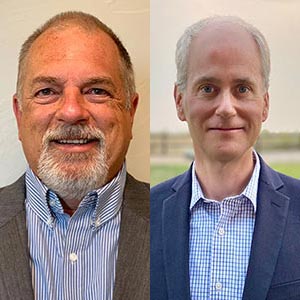
The 2020 Food Engineering Plant of the Year award was earned by the J.M. Smucker Co. for its production facility in Longmont, Colo.
The plant, designed and built by Dennis Group, produces hundreds of millions of Uncrustables sandwiches each year. While the plant is a major design and construction achievement, it’s also indicative of Smucker’s company-wide focus on building a high-performance organization.
That culture relies heavily on communication and documentation of projects. Each project is extensively documented and added to the company’s archive of project material for future reference. Project managers are expected to take ownership of the project and keep all stakeholders up to date on each step of the project and any potential challenges.
The company also has in place a strong commitment to developing technical skills and cross-training employees so that teams can be self-sufficient. While teams are expected to document their projects and share lessons learned, they are also expected to work independently instead of having someone constantly looking over their shoulders.
All of those elements came together at the Longmont facility. The Uncrustables product line is so popular the company could not keep up with demand, and the plant needed to come on line quickly to meet production goals. The project broke ground in June 2017 and produced its first Uncrustables for sale in June 2019, ahead of initial timelines.
For more on the 2020 Food Engineering Plant of the Year, check out the April cover story in Food Engineering.
Sustainable Plant of the Year
MycoTechnology, Aurora, Colo.
Speakers: Rick Becker, COO, and Jason Ivanic, Engineering Manager, MycoTechnology

The 2020 Food Engineering Sustainable Plant of the Year award was earned by MycoTechnology for its company headquarters and production facility in Aurora, Colo.
The company manufactures mushroom-based bitter blockers and protein powder, using a sustainable ingredient to complement its focus on sustainable production. The company’s process is water intensive, and water is precious in Colorado. So when working with CRB on the design and construction of the facility, MycoTechnology focused heavily on water efficiency wherever possible.
Among the water efficiency strategies is reclaiming water from the vacuum evaporator, which is used to concentrate product before drying. Water is captured as process condensate and used as the make-up water for the fluid coolers.
The company doesn’t just focus on water. Energy efficiency is also a cornerstone of its sustainability efforts, and it looked for opportunities such as heat recovery on the continuous sterilization unit and using hot vapor from the first stage of the evaporator to heat the second stage.
Outside air is used whenever possible to reduce the energy demands of the HVAC system, and the production area is ventilated, but not conditioned to further cut energy use.
The company also has a commitment to sustainability among its workforce. An employee-led sustainability committee looks for ways to cut down on waste and implement recycling strategies wherever possible.
For more on the 2020 Food Engineering Sustainable Plant of the Year, check out the November cover story in Food Engineering.
Women executives still have a hard time getting their ideas accepted in the food manufacturing and engineering industry. And when companies don’t do enough to seek out women’s contributions, a panel of industry leaders say those businesses miss out on the strengths that women bring to innovating processing solutions or managing workplace challenges.
“We really need to understand that we need to listen to women,” Christie Lagally, founder and CEO, of Rebellyous Foods, said during the women in food manufacturing panel discussion. “We often have unique perspectives on how to do business and how to do business effectively, and sometimes we do get tired of not being validated or not being taken seriously because of the gender issue.”
Rebellyous Foods makes plant-based chicken nuggets and develops equipment and processing solutions to improve meat alternatives’ quality and production efficiency. Lagally has spent nearly three years “screaming from the treetops” about how her company is working to solve the difficulties of being profitable at making plant-based meat because the manufacturing process is so difficult.
“There were so many naysayers when it was coming out of my mouth, but when those same kind of ideas came out of the mouths of male industry leads, it’s somehow just accepted as universally true.”
When moderator Gail Becker, CEO of Caulipower, asked what about being a woman helps guide the panelists as they manage the unprecedented challenges from COVID-19, the executives agreed that they use empathy and grace to handle employees’ concerns.
Women leaders at Texas Food Solutions, an HPP toller, handle the pandemic with empathy “first and foremost” because employees are in a different states of digesting information about the crisis, especially in the early days when guidance shifted quickly, President Jasmine Sutherland says.
“Employees want to know that their job is safe. They want to know that they can provide for their family. They want to know that they’re going to be healthy at the end of the day.”
Suzanne Kopcha, vice president, consumer products and retail industry, Siemens Digital Industries Software, says she’s enjoyed seeing more men showing empathy during the pandemic, with many coworkers balancing childcare and school at home, and taking a more laidback approach to meetings in casual clothes with kids nearby. “It’s a redefinition of balance and the fact that we are whole human beings who have to deal with a lot more than just the tasks that we’re responsible for at work.”
Listen to the executives’ take on many more compelling topics, including being the only woman in the board room and what women interested in the field should expect, in the on-demand recording at www.foodautomationconference.com.
The Engineering Challenges of Plant-Based Meat
Christie Lagally, founder and CEO of Rebellyous Foods
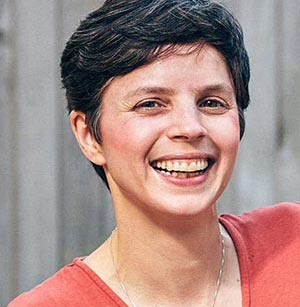
Since the days of Vegelona in the 1960s, the popularity of plant-based meat has taken off in terms of popularity. Christie Lagally, founder and CEO of Rebellyous Foods, says we now see massive unmet demand. People do not have access to meat replacements despite the fact that they are trying to reduce their meat consumption for human health, climate change, animal welfare, and now pandemic prevention reasons, she says, and demand for plant-based meat is expected to rise even further.
“As more people on the planet are impacted by the fallout of industrial meat production, including dwindling public and personal health, climate change, agricultural pollution and animal cruelty issues, we see a continual rise in interest for alternatives to animal meat,” she says. “And in the middle of this pandemic, we have come face to face, masks on, with the fact that intensive animal agriculture is one of the most looming threats for the next global pandemic.”
The world is demanding meat alternatives, and yet all we can produce is enough plant-based meat for one meal per person per year. “That’s like advocating for people to not drive their car to prevent greenhouse gas emissions and then saying they can only use public transit one day out of the year,” she says.
Lagally dives into the history of plant-based meat production, and explains that equipment used for subtractive meat processing is problematic for the additive manufacturing required for plant-based meat products.
She says that because plant-based meat needs to complete one-on-one with its animal-based counterparts, Rebellyous has been working on a manufacturing system that will aid in this endeavor.
They are designing and implementing a new generation of equipment to make plant-based meat faster, higher quality and less expensive—ultimately producing a plant-based chicken nugget for the same price as a meat-based chicken nugget.
The Rebellyous patent-pending “Mock 1” production system is set to roll out in 2021 and will allow for clean label ingredient decks and protein structuring with all ingredients included.
Plant Dynamics Unique to Emerging CPG Brands
Walter Nimocks, co-founder and CEO, Just Made Foods and Jasmine Sutherland, president, Texas Food Solutions (TFS)
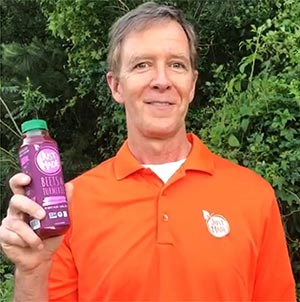
Just Made Foods is a Houston-based company that makes tropical-based juices. CEO Walter Nimocks and his wife, Norka, who he met in South America where they lived for decade, started the company in 2017 after enjoying the tropical fruits in the region. Nimocks explains that they chose to use high pressure processing instead of heat pasteurization to preserve the juice’s freshness and nutritional value.
Jasmine Sutherland, president, Texas Food Solutions explains the HPP process and TFS’s role in providing a process that introduces an extreme amount of pressure to extend shelf life and eliminate pathogens for fresh food customers.
Food Engineering’s Editor in Chief Casey Laughman moderates the panel, inquiring about the challenges a brand faces when moving from a startup to operating at scale.
“It is a challenge,” Nimocks says. “For us, the one things that has helped us is that … we made the investment to open our own bottling facility.” This was after using a co-bottler for the first seven or eight months with inconsistent results. He says having his own bottling has really improved the consistency and quality of their product. He adds that working with TFS has allowed them to run small batches and tweak formulations as they go. “Before we launch something, we know it is a really good product to put in the market,” he says.
From the tollers’ point of view, Sutherland explains that they never sell 100% capacity of their machine, they allow for overages, and they ensure that redundancy and downtime are worked into their forecast.
Catania Oils is one of the Northeast’s largest processors and packers of plant-based oils, including olive, vegetable, blended and specialty oils. The company ships to all 50 states and Canada, and its oils are a key ingredient in some of the nation’s most popular brands, including Kellogg’s, General Mills, Ken’s Salad dressings, Cedars Hummus, Bumble Bee Tuna and Gorton’s Seafood.
Joseph Basile says that as president, it is his personal mission to leave his mark on the family business to consistently seek new ways to improve upon what the company does, keeping abreast of the latest industry trends, and when appropriate, harness the power of new technologies to increase efficiencies and profit.
Basile talks about Catania’s relationship with AMD Oil Sales and the possibility of investing in blockchain technology. He acknowledges that pros of blockchain include better security, a higher level of transparency, improved traceability, speed and efficiency, and cost savings.
“Blockchain establishes undisputable facts: the country of origin, the age of the harvest, when it was loaded into the tanks, and its journey along the way,” he says. Everyone has access to the same data points at the same time.
He notes that even though blockchain first came onto the scene in 2008 and gained traction in his industry just a few years ago, it is still a work in progress. He says it requires the early adopters to test drive the technology, and it will be several more years before its full potential is realized.
Although blockchain is not currently being utilized at Catania, Basile explains the rigorous quality process that Catania Oils must go through, which includes GFSI audit score of 100%; inspections for food fraud, security and traceability; Cook & Thurber score of 95%; SQF Level 2; organically certified by QAI; non-GMO project certified; and Kosher.
Achieving next-level plant performance through digital transformation
Presented by Emerson
Productivity across manufacturing is stagnating, especially for products produced for decades.
Often, manufacturers have already made significant efficiency improvements over the years and have trouble wringing additional efficiencies out of workforces, says Marcus Parsons, global industry director, food and beverage, Emerson.
Instead, those processors need a new way of doing business through a digital transformation that is essential to stay competitive, Parsons says.
When manufacturers achieve that transformation, the data they collect helps them move to a new level of production efficiency and reliability, reducing downtime and maximizing quality.
“The vision here is to combine data, understand correlations between manufacturing, energy, reliability, quality and safety systems and then be able to act appropriately using these full datasets,” Parsons says.
Emerson works with customers to adopt these key technologies to achieve that transformation:
Sensing: Use data from current sensors, while supplementing with new ones to cover any data gaps in processing, packaging or energy management. Emerson’s expanded sensor offerings include location tags to track personnel and equipment; trackers for perishable cargo temperature, CO2 levels and light exposure; and wireless vibration monitors for hard-to-reach locations.
Analytics and augmented reality: The spectrum of diagnostics ranges from a simple action like verifying calibration of a device to advanced analytics including machine learning and pattern recognition that could show when a pump is or isn’t available, for example. Augmented reality tools help companies digitize work practices and troubleshoot with remote assistance.
Cloud: Use the cloud not only to manage data, but also for new business models and services. With connected services, processors transfer data securely to Emerson to recommend actions. For example, Emerson could monitor steam traps and send the processor a report on when they will fail.
Why data is the secret ingredient for the food and beverage industry
Presented by OSIsoft
As manufacturers move along their digital transformation journey, their benefits grow when they reach the point of expanding their efficiencies and data insights enterprise-wide and throughout their value chain.
“Tremendous data is pervasive and valuable, but it’s quite disconnected,” says Ted Combs, industry principal for food and beverage, OSIsoft. “One system doesn’t talk to the other. People are striving to get to it (data), and they’re spending too much time discovering the data, managing it and trying to get it to work.”
OSIsoft helps food and beverage companies untangle data from numerous sources, making it readable and giving it context so many people across that the enterprise can make use of it.
“Plants are an isolated entity in the enterprise. We’re trying to bring value across the whole enterprise.”
With that useable data, companies optimize processes and product quality, monitor machines’ health, track energy use, reduce carbon footprints, and share information with distributors and suppliers. “My experience is the ROI is very, very rapid,” Combs says.
As one example of a company that pursues digital transformation well beyond a single plant’s walls, Combs describes how Hershey’s went about managing costs and efficiencies globally using data. The candy maker cut maintenance costs 33%, throughput losses by 30% and quality losses by 22%.
When Deschutes Brewery was looking to add a new brewery, OSIsoft helped the company interpret and visualize its fermentation data to know exactly then the process was done, instead of relying on manual checks that could let a batch go too long. A 4% decrease in fermentation time equaled “a lot of money for them,” he says.
The necessity of sanitary conveyor design in today’s modern food processing facilities
Presented by Wire Belt Company of America
Over his career with Wire Belt, product line support leader Rick Milner has had the opportunity to visit countless processing plants across the U.S., Canada and Mexico, and he says the common theme they all have is sanitation issues.
He says that one of the biggest threats to a food manufacturer’s profitability is product recall through contamination by foreign objects and/or pathogens. To avoid this, he says facilities should perform frequent, thorough cleaning and following sanitation standard operating procedures, which is best achieved by using equipment that meets or exceeds hygienic design criteria as specified by NSF International and EHEDG.
Milner shares a video of a high-volume processing plant with several different conveyors and then breaks down how each has its own unique challenges. Tight mesh, for instance, means that residue is not easily removed and can harbor pathogens, so he says to always select the largest mesh as possible. Also, he says to avoid COP tanks as much as possible. He goes over consideration for conveyor frames, avoiding areas where pathogens can hide and standing water can accumulate. An open design reduces residue buildup issues, which are difficult to clean.
Milner touches on hygienic design guidelines, including how to facilitate cleaning, self-draining surfaces, no hidden areas (if you cannot see it, you cannot inspect it), and an open design with a minimum number of covers and panels. He then explains how to incorporate them. An open leg frame, for instance, with thinner frames have less surface area and a welded construction eliminates gaps.
The growing importance of the digital threads across the food & beverage product lifecycle and associated systems
Presented by Siemens
“Digital twins” connect the real world with the virtual world; for example, a real product can be defined by a virtual representation of the product, and a real production system can be modeled by a virtual production system in software connected via a collaboration platform, says Nina Verstandig, digital enterprise, industry manager for CP&R, Siemens, Digital Industry Software, in her FA&M Solutions Theater program.
“Digital threads” are a way to bring value from the digital twin to the real world, and include integrated program and lifecycle management, smart product and process design, production design and optimization, flexible manufacturing and traceability and insights—in no particular order. Each of these digital threads is connected via integrated processes that provide feedback, intelligence, simulation and fine tuning as products go from ideation to production and packaging and into the supply chain.
In short, these connected processes, together with digital threads provide for:
- Fast and agile new product introductions and program management, leveraging the collaboration platform
- A multidisciplinary approach to design validation, leveraging simulation and concurrent design to ensure manufacturability, quality and cost
- Virtual design, simulation and commissioning of production assets to reduce time and risk in new facilities, expansions and retrofits
- Product-driven execution with adaptable automation to drive flexibility in manufacturing operations
- Data analytics across the supply chain and continuous feedback to the virtual world to optimize products, production and performance.
In an ever increasing, sped-up world where customers want a new design yesterday, and expect a perfect product delivered as designed tomorrow, manufacturers need to look to digital twins and threads to achieve this speed to market reliably and cost effectively—because if they don’t, their competitors will.
Looking for a reprint of this article?
From high-res PDFs to custom plaques, order your copy today!
